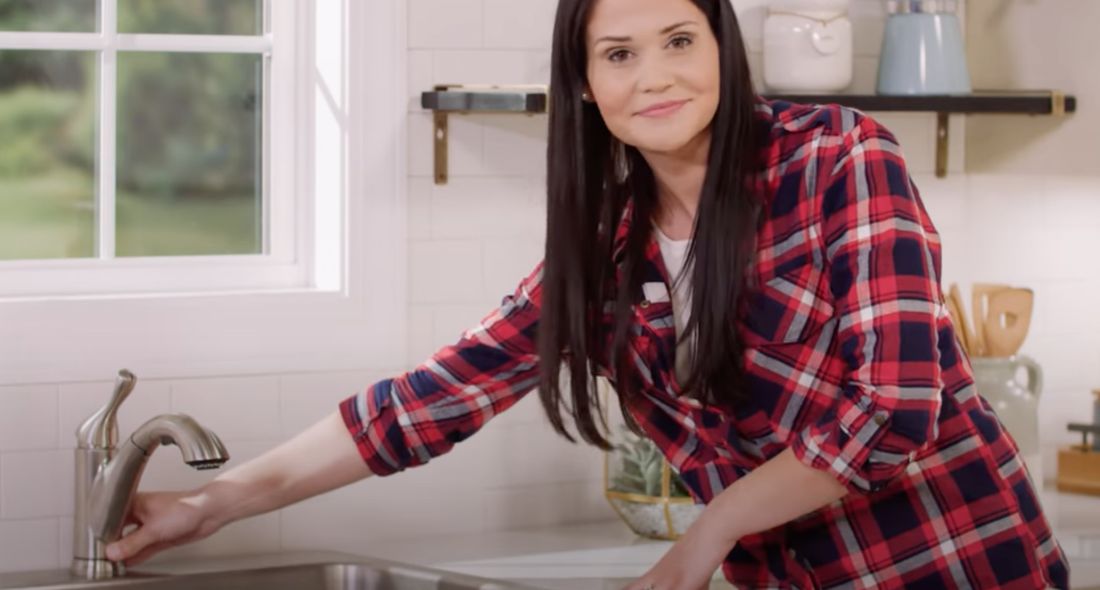This great article down below in relation to What Causes Leaky Faucets & How To Fix Them is definitely stimulating. Don't miss it.

Dripping faucets might look like a minor inconvenience, yet their effect surpasses simply the aggravation of the noise. From drainage to sustaining unneeded financial expenses and wellness dangers, overlooking a leaking tap can bring about different effects. In this short article, we'll explore why it's vital to address this typical household problem immediately and successfully.
Wastefulness of Water
Environmental Effect
Leaking taps add significantly to water waste. According to the Epa (EPA), a solitary tap trickling at one drip per second can lose more than 3,000 gallons of water per year. This not only strains water sources yet likewise affects communities and wildlife dependent on them.
Financial Prices
Enhanced Water Costs
Past the environmental effect, dripping taps can pump up water expenses significantly. The collected waste over time translates into higher energy expenditures, which could have been avoided with timely repairs.
Potential Property Damages
Moreover, extended leaking can bring about damage to components and surface areas bordering the tap. Water accumulation can create staining, deterioration, and even architectural issues if left unattended, leading to added repair work costs.
Health Problems
Mold And Mildew and Mold Growth
The continuous visibility of wetness from a trickling tap develops a perfect atmosphere for mold and mildew and mold development. These fungis not only endanger interior air top quality but likewise present health threats, specifically for individuals with respiratory system conditions or allergic reactions.
Waterborne Illness
Stagnant water in trickling taps can become a breeding ground for bacteria and other virus, boosting the risk of waterborne conditions. Contaminants such as Legionella bacteria flourish in stationary water, potentially leading to severe health problems when ingested or inhaled.
DIY vs. Expert Fixing
Advantages and disadvantages of Do It Yourself Repair
While some may try to take care of a leaking tap themselves, DIY repairs include their own set of obstacles. Without proper understanding and tools, do it yourself efforts can exacerbate the concern or bring about insufficient fixings, prolonging the trouble.
Advantages of Hiring a Specialist Plumber
Hiring a specialist plumber guarantees that the underlying cause of the leaking faucet is dealt with properly. Plumbers possess the know-how and tools to identify and fix tap concerns effectively, conserving time and decreasing the threat of more damages.
Step-by-Step Guide to Dealing With a Dripping Faucet
Tools Needed
Prior to trying to take care of a trickling faucet, gather the essential devices, including a flexible wrench, screwdrivers, replacement components (such as washing machines or cartridges), and plumber's tape.
Typical Tap Issues and Their Solutions
Determine the kind of tap and the particular concern causing the drip. Common troubles consist of worn-out washing machines, corroded shutoff seats, or malfunctioning O-rings. Describe manufacturer directions or online tutorials for step-by-step advice on fixings.
Preventive Measures
Normal Upkeep Tips
To stop trickling faucets, carry out regular maintenance such as cleaning aerators, checking for leakages, and replacing worn-out parts without delay. Additionally, consider installing water-saving tools or upgrading to a lot more efficient fixtures.
Importance of Prompt Repair Works
Attending to leaking faucets as soon as they're observed avoids additional water waste and prospective damage, ultimately conserving both water and money in the future.
Influence On Residential Or Commercial Property Value
Perception of Well-Maintained Home
Preserving a residential or commercial property in good condition, consisting of attending to maintenance problems like dripping faucets, enhances its perceived worth and worth among potential purchasers or renters.
Influence on Resale Worth
Characteristics with properly maintained plumbing fixtures, including taps, command greater resale worths in the real estate market. Resolving trickling taps can add to a positive perception throughout residential or commercial property assessments and negotiations.
Environmental Duty
Specific Payment to Conservation
Taking duty for dealing with trickling taps lines up with wider initiatives towards water preservation and ecological sustainability. Every individual's actions jointly make a substantial impact on maintaining priceless resources.
Sustainable Living Practices
By prioritizing punctual repair work and taking on water-saving routines, people add to lasting living practices that benefit both existing and future generations.
Verdict
Attending to a leaking faucet goes beyond mere convenience; it's an essential action towards preserving water, reducing economic expenses, and safeguarding health and property. Whether through DIY repairs or expert assistance, doing something about it to repair trickling faucets is a tiny yet impactful means to promote accountable stewardship of resources and add to a healthier, much more sustainable future.
How to Fix a Leaky Faucet: Step-by-Step Repair Guide
A leaky faucet may seem like a simple annoyance, but if it's not fixed promptly, that leak could cost hundreds to potentially thousands. From water damage to mold, mildew, and high water bills, even a tiny leak can be catastrophic if left unattended. Damage like this can even affect the overall value of your home, so it's important to take the right approach for leaky faucet repair. You may need the help of a plumber in some cases, but we've got a few tips you can try on how to fix a leaky faucet before calling the pros.
Four Faucet Types
When you're learning how to fix a leaky faucet, the first step is knowing what kind of faucet you're working with! There are four common types.
Cartridge Faucets
Cartridge faucets come in one- or two-handled varieties. In one-handled cartridge faucets, hot and cold water combines in a single cartridge. In the two-handled versions, hot and cold water are controlled separately and mixed in the faucet.
Ball Faucets
Ball faucets have a single lever you push up and down to adjust the pressure and rotate to change the temperature. A slotted metal ball controls the amount of water allowed into the spout.
Compression Washer Faucets
They're the oldest type of faucet, but they're still used in many homes — especially older ones. Compression faucets have two separate handles that, when turned, raise or lower the washer that seals a water valve. This valve stops water from flowing through the faucet when it is turned off.
Disc Faucets
Disc faucets rarely need to be repaired due to their maintenance-free design. The water flow is controlled by two discs — the upper one raises and lowers against a fixed lower disc, creating a watertight seal. If your disc faucet starts leaking, you may need to replace the seals or clean residue buildup from the inlets.
Fixing a Leaky Faucet
Step 1: Turn Off the Water
Whether you're learning how to fix a leaky bathtub faucet or how to fix a leaky kitchen faucet, always turn off the water supply to your working area when you're fixing a leak. The last thing you want is a flood added to your list of things to fix.
Look for the shutoff valves below your sink or around the tub and turn them clockwise to stop the water flow. If your faucet doesn't have shutoff valves, you may need to turn off the water for the whole house. Check to make sure it's off by turning the faucet on. If nothing comes out, you're ready to start the repair.
Step 2: Take Apart the Faucet
How you disassemble your faucet depends on the type of fixture you have. You can use a flathead screwdriver to remove the caps on top of the handle or handles for cartridge and compression faucets. Inside, you should see handle screws. Unscrew these with a screwdriver to remove the handle.
Disc- and ball-style faucets will typically have an inlet screw near the handle, and removing that will reveal the interior of the faucet.
Detach the Valve Stem
For cartridge- and compression-style faucets, you'll see the inner valve stem or cartridge once you remove the faucet handles. If you have a compression faucet, unscrew the brass valve stem. If you have a cartridge faucet, pull out the cartridge. If your cartridge has been in place for a while, it may require some tools or extra force to remove it due to mineral deposits.
Examine and Replace Parts
Once you've removed the parts, check them out to confirm what needs to be replaced. You may see corroded rubber washers, O-rings, stems, or cartridges. On a ball-style faucet, check the seats and springs for damage.
If you need to repair a leaky disc faucet, check the inlet and seals on the lower disc.
Once you determine what parts must be replaced, visit your local hardware store. Bring the damaged parts with you to ensure you can purchase the correct components to replace them.
Clean Valves and Faucet Cavity
If you've removed a stem or cartridge, you may notice mineral buildup in the faucet's threads. Use white vinegar to clean the valve seat by soaking it for a few minutes, then scrub it away with a soft toothbrush and rinse with warm water. You can also clean the interior of the faucet in the same way.
Reassemble the Faucet
Once your faucet is cleaned and the required parts have been replaced, it's time to reassemble it. Put the pieces back together and slowly turn the water supply back on. Doing this slowly is crucial because too much initial water pressure can damage the new hardware you've just installed.
https://homewarranty.firstam.com/blog/how-to-fix-leaky-faucet

We hope you enjoyed our section about Leaky Faucets: Why They Happen & What to Do About Them. Thank you for finding the time to read our post. Do you know about another individual who is fascinated by the subject? Why not promote it. I thank you for reading our article about Should I Repair or Replace a Leaky Faucet?.